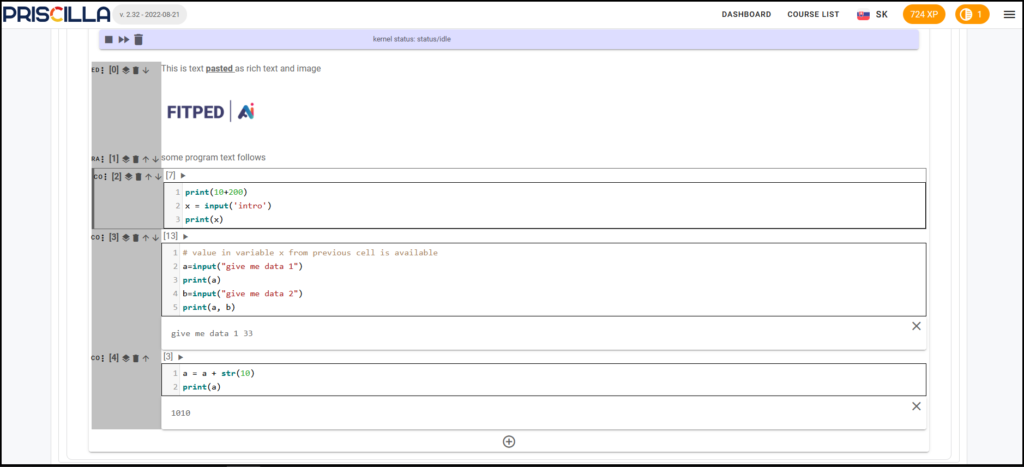The work of a data scientist is very often intertwined with the use of an environment using Jupyter notebooks where students write code that processes data and generates outputs prepared for interpretation. Sometimes the work ends at this point, and sometimes, the result is a model that will be deployed to solve the problems of the given class. If the student should follow these steps, he needs a tool that allows him to experiment with data, obtain the created model, verify its functionality, success, overfitting, speed, etc.
In the context of Priscilla supporting the teaching of programming and the requirements mentioned above for the education of AI, the learning objects for AI courses should support Jupyter notebook ecosystem.
In order to integrate the Jupyter infrastructure into the used Priscilla system and enable communication with Python kernels, it was necessary to create a clone of the design of a standard Jupyter notebook and enrich it with possible additional features (the ability to stop the program, friendly insertion of input data into the running program, the ability to combine with rich text, etc.).
Integration of the Jupyter notebook clone environment with the backend technology of the Jupyter server in connection with the proven features of the Priscilla system provides the new system with all the original benefits (microlearning, gamification, automatic evaluation of source code, communication between users, etc.).

